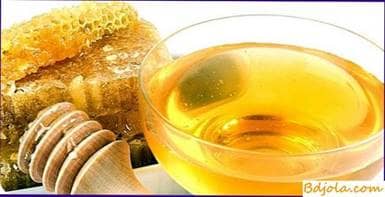
When feeding bees turn sugar syrup into sugar honey. In the content of simple sugars, it is similar to honey. Bees usually have a good winter on it, but because of the extremely low content in it, the bees need to consume a stock of protein from their bodies. As a result, in spring, despite a sufficient number in the nest of Perga, bees grow less brood.
Attempts to feed bees for the winter with a syrup enriched with protein by adding milk, albumin curd and yeast to it, lead to a worsening of the wintering of bees. Therefore, the feeding of bees with a protein-enriched syrup is mainly used in spring, summer and early autumn.
In top dressing, a small amount of sugar syrup with a minimum protein concentration is first prepared. Gradually, as the bees become accustomed to it, the protein concentration is increased to the optimal rate.
At the same time, it is necessary to make sure that the bees take away the food in a timely manner, since it can quickly ferment.
In recent years, in beekeeping, milk is used as a protein feed. For the preparation of milk syrup, sugar syrup is first cooked at the rate of 0.8 liters of water per 1.5 kg of sugar. Once the syrup has cooled to the temperature of fresh milk, add to it and mix the milk in an amount of 200 g for every 1.5 kg of sugar.
At 20% change of water with milk, the milk syrup will have the protein concentration the same as in honey -0.5-0.6%.
In addition to feeding bees to milk syrup, some beekeepers use top dressing, consisting of sugar syrup and baker’s (less beer) yeast. Yeast, like milk, contains enough easily digestible protein, vitamins and microelements.
For yeast dressing, prepare a syrup in a concentration of 1: 1 in such an amount that for 1 part by weight of baker’s yeast there are 20 parts by weight of syrup. Then, in a small amount, the cooled syrup is dissolved by thoroughly stirring the yeast until a uniform mass is formed. Liquid yeast is mixed with syrup and brought to a boil.
Dry baker’s yeast for 1 liter of syrup is taken 12 grams, and beer – 24 tablets.
Currently, apiaries carry out a production test of sugar syrup enrichment with all essential and non-essential amino acids by feeding 0.03-0.05% autolysin of baker’s yeast to bees proposed by the institute of organoelement compounds. The test results are encouraging. Autolysin baker’s yeast has a high nutritional value. It does not contain indigestible cell membranes, lipids, which cause the food to be clogged and reduce its safety under normal conditions. The food is well preserved in cans with ground lid or in closed polyethylene bags for 1-2 years at room temperature.
To enrich sugar sugar syrup protein is sometimes used albumin curd in 20% concentration. In some apiaries, whey of blood of cattle in 3-6% concentration is used as a protein feed. In sugar syrup, enriched with blood serum, add 0.3-0.5 g of citric acid per 1 liter of syrup. Blood serum is produced by meat processing plants and biocomplexes with a preservative (shelf life 12 months) and without preservatives (shelf life of 6 months).
As protein substances, it is recommended to use soy flour, milk powder, pollen in a thick sugar-honey mixture.
The addition of protein substances to the feed increases the protein content in the body of the bee, contributes to the upbringing of the brood in bee families – up to 35%, but does not replace pollen or pergus to rear the brood.
To combat infectious diseases, antibiotics and other medications are added to the syrup.
Micronutrients and vitamins play an important role in the life of bees. In the required amount they are contained in pollen and perge. As practice has shown, the addition of cobalt to sugar syrup significantly increases the resistance of the bees to diseases and positively affects brood rearing.
In chloride and sulphate cobalt pure cobalt contains about 1/3. Therefore, for each liter of feeding add 24 mg of the substance. Chloride cobalt is produced in the form of one-gram tablets with ballast of sodium chloride. In this case, add 1 tablet of the drug to 2 liters of syrup.
Since ancient times, when only started to use bees to feed bees, it was recommended to accelerate the cleavage of complex cane sugar by simple adding to each liter of syrup from 0.3 to 1-3 g of one of the acids – citric, oxalic, acetic, wine, wine-stone, which are contained in a small amount in honey.
Currently, it is believed that with the timely feeding of bees to sugar syrup for the winter to add acid should not be, since the necessary acids in the sugar are available. As for spring, the feeding of bees, as shown by practice, with a small amount of acidified syrup after their exhibition from the winter hut has a beneficial effect on the speed of bowel cleansing and increases the activity of bees in brood rearing.
Крепление для ульев. Моль на сотах.
Hothouse beekeeping